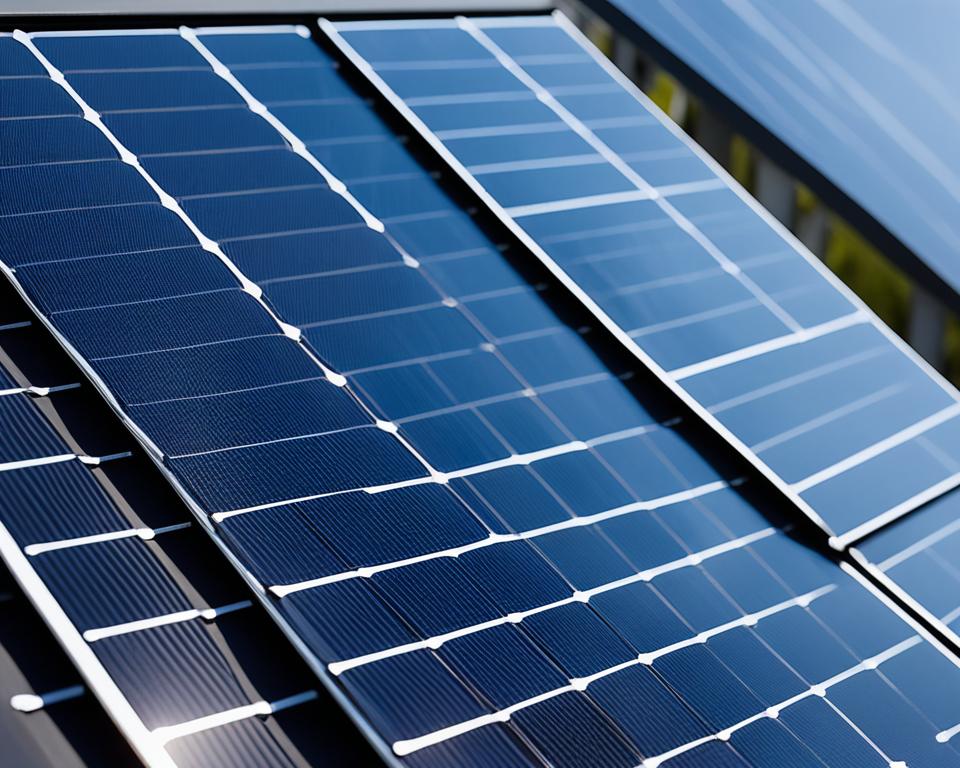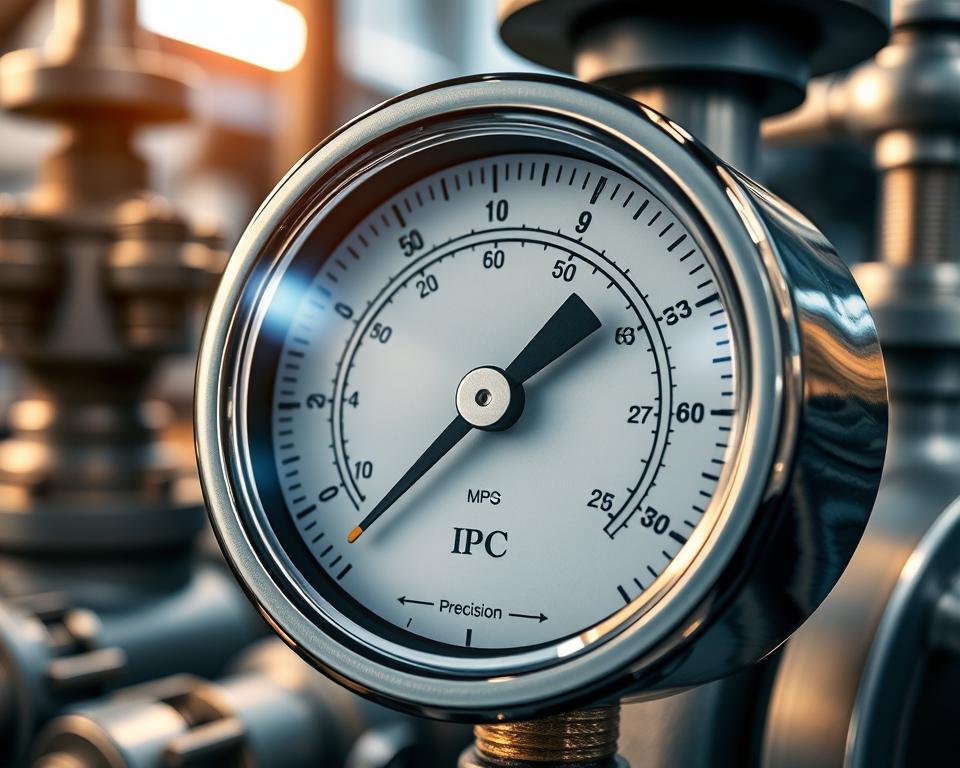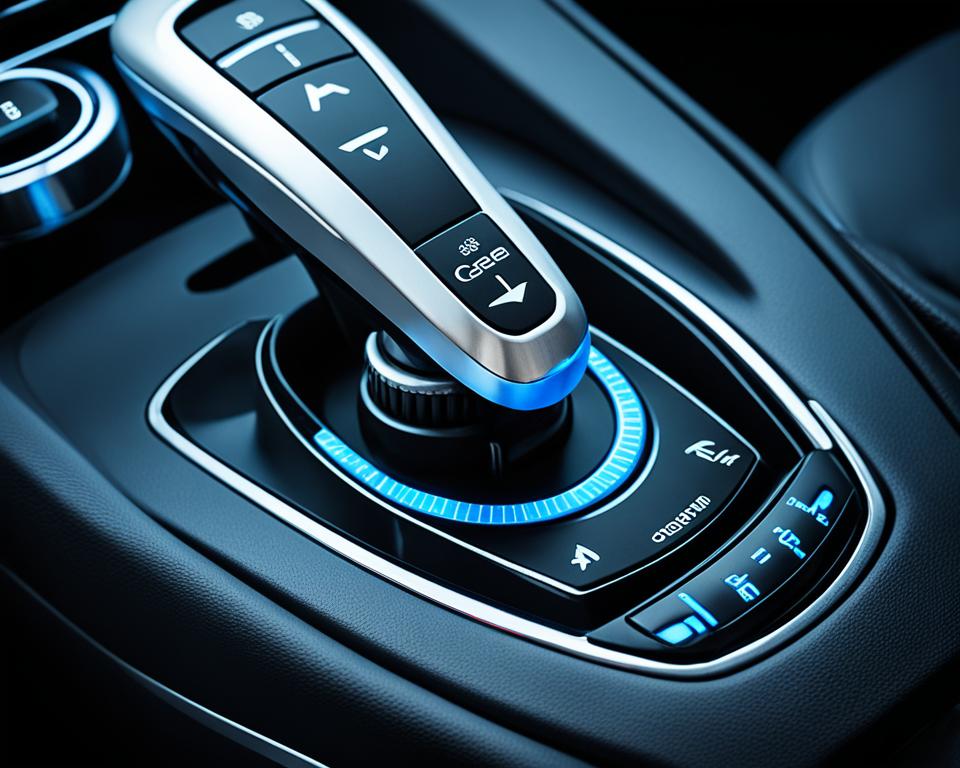Monocrystalline solar panels stand out as some of the best in the world of solar energy. They are made from single-crystal silicon. This means they can turn sunlight into energy very well. They are also very tough and last a long time. In this guide, we’ll help you pick the right monocrystalline solar panels for your home. We will talk about what to look for, how to install and maintain them, and the good they do for the planet and your wallet.
Read interesting things at : trainwithnexus
Key Takeaways
- Monocrystalline solar panels are the most efficient type of photovoltaic cells on the market, with conversion rates typically ranging from 15% to 22%.
- These panels are known for their exceptional durability and long lifespan, often lasting 25-30 years or more with proper maintenance.
- Monocrystalline solar panels have a sleek, space-saving design, making them an attractive option for homeowners with limited roof space.
- Proper placement and orientation of the panels, as well as regular cleaning and maintenance, are crucial for maximizing their energy output.
- Homeowners can take advantage of various financial incentives, such as government rebates and tax credits, to offset the initial investment in monocrystalline solar panels.
Understanding Monocrystalline Solar Panels
Monocrystalline solar panels use single-crystal silicon as the key material. This makes them more efficient in turning sunlight into electricity. That’s why they are a top pick for solar energy systems at homes and businesses.
What Are Monocrystalline Solar Panels?
These panels have silicon wafers that grow from one big crystal. This special structure helps electrons move better, which boosts the panels’ efficiency. Their neat look and great performance make monocrystalline panels the choice for those wanting reliable renewable energy.
The Science Behind Monocrystalline Photovoltaic Cells
Monocrystalline photovoltaic cells work by allowing electrons to easily move within a crystal. Sunlight makes the material’s atoms interact, making the electrons start flowing. This flow creates the electricity we can use, which is at the heart of how these panels work.
Advantages of Monocrystalline Solar Panels
Monocrystalline solar panels are a top choice for many. They offer high monocrystalline solar panel efficiency, usually 15% to 22%. This lets them make more power output per area than other solar types. They also last a long time, up to 30 years.
High Efficiency and Power Output
Monocrystalline solar panels use single-crystal silicon. This helps them turn sunlight into electricity better. So, they produce more power output, making them great for those who want a lot of solar energy.
Durability and Long Lifespan
These panels last longer than many other solar types. They can work well for 25-30 years with care. That means homeowners get reliable solar energy for a big part of their lives.
Space-Saving Design
Monocrystalline solar panels are also space-efficient. They turn out more power in a smaller area. This makes them perfect for houses with small roofs. It’s a smart choice for saving space while going solar.
Factors to Consider When Choosing Monocrystalline Solar Panels
When picking the top monocrystalline solar panels for your house, there are key points to think about. This includes the efficiency, power, size, and warranty. Don’t forget the company’s reputation, too, and what others say about them.
You should also check how much energy your home needs. Make sure the panels will work well with your roof size and local weather.
The efficiency rating of the panel is vital. It shows how well the panel turns sunlight into electricity. Panels with higher ratings will produce more power from the same area. This feature is great for those with small roofs.
Next, look at the power output. This is how much electricity the panels can make. Choose panels that meet your energy needs for powering your home.
Consider the physical size of the panels, too. It affects how much roof space they’ll use. Make sure they fit well on your roof.
Also, think about the warranty. A good warranty shows the company believes in its product. Aim for a 20 to 25-year warranty that covers the panels and their power output.
Lastly, research the reputation and certifications of the maker. Brands known for quality and safety are better choices. Look for recognition from groups like the IEC or UL.
Sizing Your Solar System
Choosing the right size for your solar panel system is key. First, look at your home and how much energy it needs. Consider the size of your house, who lives there, and how you use energy. Then, figure out the number of panels you need. This counts the rated wattage of the panels and how much room you have on your roof.
Assessing Your Energy Needs
Start by figuring out how much energy your home uses. Look at your house’s size, how many people live there, and your monthly electricity use. This info helps you know how much your solar panels must generate.
Calculating Panel Requirements
Knowing your energy needs, you can find the right number of solar panels. Consider the panels’ rated wattage and roof space. This step makes sure your solar system fits your energy needs.
Reputable Monocrystalline Solar Panel Manufacturers
Choosing the right monocrystalline solar panel maker is key. Look for proven quality and reliability. SunPower, LG, Panasonic, and REC Solar lead the way with their high-efficiency panels. With monocrystalline solar panel manufacturers like these, you can trust in their top-notch products. They always meet, even beat, the industry’s standards.
Industry-Leading Brands
SunPower is a pioneer with top-notch monocrystalline panels. LG is a name known worldwide for its quality electronics, including monocrystalline solar panels. Panasonic and REC Solar are also highly respected. They bring advanced technology and trusted industry-leading reliability to homes. When you pick a solar panel from these brands, you’re choosing excellence.
Quality Certifications and Warranties
The best monocrystalline solar panel manufacturers validate their panels with top certifications. The International Electrotechnical Commission (IEC) and Underwriters Laboratories (UL) are two key groups. These quality certifications confirm safe and high-performing products. Homeowners can be sure their investment is secure. Plus, with product warranties lasting from 20 to 25 years, these manufacturers show they stand by their products. This displays their dedication to quality, durability, and reliability.
Installation and Placement Considerations
Where you place your monocrystalline solar panels matters a lot. The right solar panel installation ensures you get the most energy from them. This is important for your renewable power system to work well.
Roof Orientation and Angle
For top efficiency, look at your roof orientation and angle. The panels should face true south in the North Hemisphere. They should also be angled to catch as much sun as possible. These steps will give you the best shot at making a lot of clean, renewable energy.
Shading and Obstructions
Think about what could cause shading or obstructions for your solar panels. Even a little shading from trees or buildings can cut down on how well your panels work. Make sure your installation spot is clear of anything that might get in the way of sun-catching. This will let your solar panels do their best job.
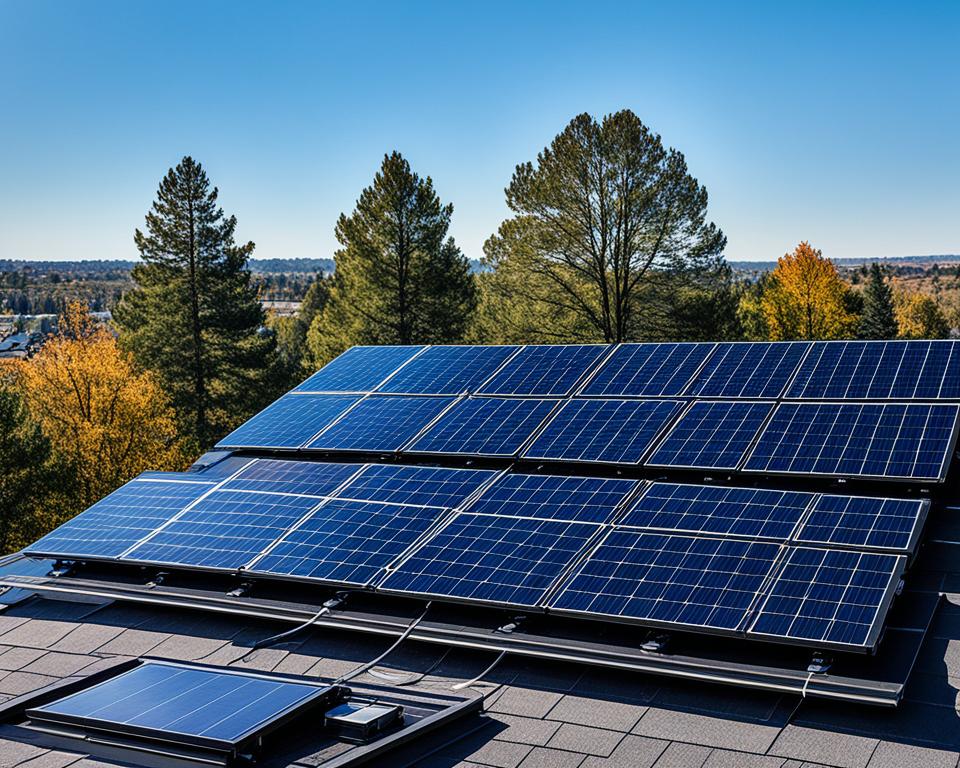
Monocrystalline Solar Panels
Monocrystalline solar panels use single-crystal silicon for better performance. They are popular for their efficiency, durability, and sleek look. This makes them a top choice for homes and businesses. They convert sunlight into electricity better than other types, working at rates from 15% to 22%.
Because of their design, monocrystalline solar panels outshine other technologies in energy conversion. The single-crystal silicon they are made of forms a solid structure. This structure helps more electrons move, generating more power.
Monocrystalline solar panels offer unmatched efficiency and performance. That’s why many homeowners and businesses prefer them. Their top-notch capability and long lifespan lead the way in renewable energy. They help create a greener, more sustainable future.
Maintenance and Care
Keeping your monocrystalline solar panels in top shape is crucial for their long-term function. Use a soft-bristle brush and mild detergent for cleaning. This removes dirt that might block sunlight and lower the panels’ energy production.
Panel Cleaning
Clean your solar panels at least twice a year. Do it more often if your area is dusty or has a lot of pollen. A simple cleaning process can boost the system’s performance. It helps your solar setup make the most of its energy generation ability.
Monitoring System Performance
Besides keeping them clean, it’s smart to regularly check the panels. This can be done by hand or with automatic tools. Looking out for drops in energy production can point to issues. This way, you can fix things fast, ensuring your panels run at their best.
So, be sure to stick to these upkeep tips for your monocrystalline solar panels. They will help you enjoy top-notch performance and optimization for years to come. It’s all about getting the most from your investment and helping our planet with clean energy.
Cost and Financial Incentives
Monocrystalline solar panels might cost a lot upfront. Still, homeowners can use a variety of financial boosts to help with the initial price. These include rebates and tax credits from the federal, state, and local levels. With these benefits, the money spent at first can start to make more sense.
Also, the energy savings over time can really add up. This helps to cover the first costs making solar power look better all the time.
Initial Investment
The cost of monocrystalline solar panels can differ. It depends on their size, brand, and how they’re installed. But, with help from these incentives, the cost may become easier for homeowners to bear. The promise of energy savings helps a lot too.
Government Rebates and Tax Credits
Many governments want to see more renewable energy used. So, they offer rebates and tax credits to those who buy these solar panels. These financial helps cut down on the initial cost, which is good news for homeowners.
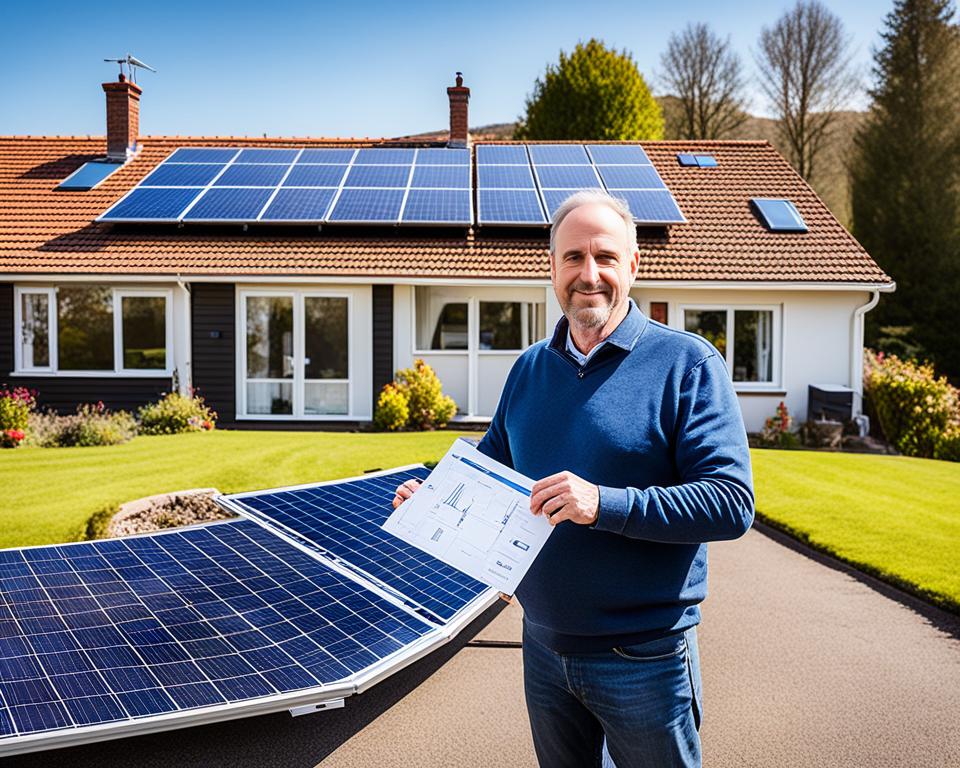
Environmental Impact
Choosing monocrystalline solar panels makes a big environmental impact. They let homeowners switch to clean, renewable energy by using sunlight for electricity. This move lowers the homeowner’s carbon footprint. It also helps the planet by fighting climate change and using sustainable energy.
Reducing Carbon Footprint
Monocrystalline solar panels are a great option for those wanting to lower their carbon footprint. They turn sunlight into power, reducing the need for fossil fuels. Fossil fuels are bad because they release a lot of greenhouse gases.
This change to clean, renewable energy lessens the impact of our energy use. It’s a big help in the battle against climate change.
Sustainable Energy Source
Solar panels create a sustainable energy source from the sun. The sun’s energy is limitless and keeps coming. Homeowners can count on it for power. This choice supports a more sustainable energy future for everyone.
Future Trends in Monocrystalline Solar Technology
The world of monocrystalline solar panels is always changing. Researchers and companies are improving these panels’ efficiency and power. With more people wanting renewable energy, the interest in monocrystalline solar technology trends is growing. This means we’ll likely see some cool new features soon.
Efficiency Improvements
Soon, monocrystalline panels will get better at turning sunlight into electricity. This means they’ll produce more power in the same amount of space. New techniques in making silicon wafers and the use of different materials will make this happen. Homeowners and companies will find these solar panels more attractive because of this.
Integration with Energy Storage Systems
Pairing monocrystalline solar systems with energy storage like lithium-ion batteries is getting easier. This setup lets people save extra solar power for rainy days or when everyone’s using a lot of electricity. This not only improves how reliable solar power is but it also pushes new innovations in solar energy. It makes using energy smarter and kinder to the planet.
Comparing Monocrystalline to Other Solar Panel Types
Monocrystalline solar panels are top in efficiency and performance. But, it’s good to know how they stack up against other types. Here, we’ll focus on polycrystalline and thin-film solar panels.
Polycrystalline Solar Panels
Polycrystalline panels have multiple silicon crystals. They are a bit less efficient than monocrystalline, at 13% to 16%. Yet, they cost less to make, often saving money for buyers.
Thin-Film Solar Panels
Thin-film panels use materials like Cadmium Telluride or CIGS. They’re less efficient but more flexible and easy to install, at 10% to 13%. They also work better in shade and changing temperatures.
Here’s a table to compare how these solar panels perform:
| Solar Panel Type | Energy Efficiency | Cost-Effectiveness | Durability | Flexibility |
|---|---|---|---|---|
| Monocrystalline | 15% – 22% | Moderate | High | Moderate |
| Polycrystalline | 13% – 16% | High | Moderate | Moderate |
| Thin-Film | 10% – 13% | Low | Moderate | High |
Understanding these differences helps homeowners to choose wisely. The best pick depends on your energy, budget, and space needs. Go for the type that helps meet your home’s energy and eco-goals.
Conclusion
Monocrystalline solar panels are a top choice for those who want to boost their home’s green efforts. Thanks to their high efficiency and where they’re doing great is their design.
Homeowners can truly make a wise choice by looking into the factors shared here. And there’s good news; there are financial perks too. Choosing these panels means not only cutting down on carbon but also joining the push for clean energy. Joining this movement sets a path for a better, greener future.
